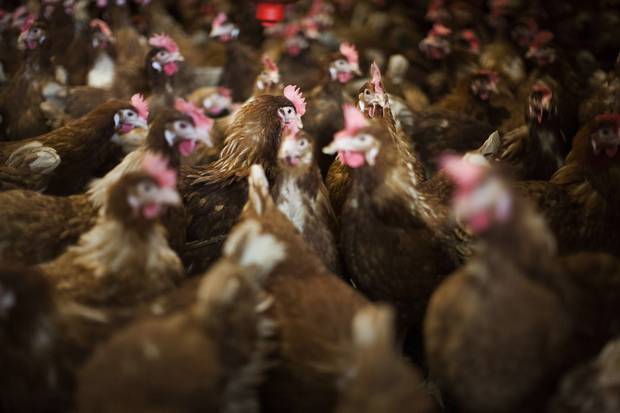PRODUCT CATEGORIES

Chicken cages are the necessary equipment for farmers to raise chickens. Whether they are large-scale farms or chickens in the family, they can be cultured with chicken cages for convenient management. What are the composition of cages?
The cage body is composed of a front net (also referred to as a feeding net), a rear net, a top net, a bottom net and a net (or a side net), and is connected by a cage card to fix the related net pieces. In order to facilitate the production, installation and transportation, the front net and the top net are often integrated, and the rear net and the bottom net are integrated, and the net is made separately.

The general scale of the cage depends on the size and habits of the chicken (such as the length and width of the chicken body and the normal standing height of the chicken), the cage feeding density, the uniform feeding width and the number of chickens per cage.
1. Front net and cage door: The flocks feed and drink through the front net. Therefore, the main structural parameter of the front net is the spacing of the longitudinal steel wires. Ask the chicken head to be able to move freely, but not to run the chicken. The chickens are caged and caged through the cage door on the front. There are four types of cage doors: (1) The entire front net is wound around the upper fulcrum. (2) The front net (or the half of the front net above the sink) is turned around the fulcrum to the outside of the cage. The above two types are the most used on stacked cages. (3) The cage door is open straight up, and the full-step and half-step cages are used more. The cage door is located in the upper part of the front net (ie, the trough, the upper part of the feeding trough), and the extension part is bent to the top net to become a three-dimensional type, called the “angle cage door”. It flips outwards and downwards around the lower fulcrum of the front net, and is mostly used for full-step and half-step cages of the Anri sink.
2. Bottom net: The main structural parameter of the bottom net is the grid scale. In order for the chicken to stand stably, the chicken manure can be successfully drained. For the egg cage, the egg should not be caught by the grid. In order to make the chicken stand stable, the mesh is as dense as possible, but the denseness makes the chicken manure not easy to leak, which also increases the production cost. Therefore, the density of the grid is based on the fact that one chicken can normally catch two or more wires at the same time when the chicken is standing normally.
3. Top net: The general response should be outside the cage, but avoid the chickens running out of the grid of the top net. Thus, the grid size should be larger than the chicken head and smaller than the chicken back width.
Separate and rear nets: These two nets are used to limit the range of activities of the chickens and avoid the battle between adjacent cage chickens. To this end, the weft of the net should be denser so that the chicken head can not be extended, and the warp can be thinner to reduce the cost. For full-step or half-step chicken cages, there are adjacent chicken cages behind the lower cages. The design of the rear nets can refer to the design criteria of the top nets.
4. Cage card: The cage card is used to fix two meshes adjacent to the cage, which are generally made of thin steel plate. The cage card is too soft. In the case of bearing heavy objects, the two mesh pieces connected to each other will be disengaged, and the fixing effect cannot be obtained. If the device is too hard, the device is laborious, and it is not easy to fasten the two wires of the adjacent mesh. The cage card is usually made of a steel plate with a thickness of 0.8 mm and is punched into a steel strip having a width of 6-8 mm, the length of which depends on the diameter of the wire to be fastened and the number of steel wires. The steel strip should be pre-bent into a curved shape to facilitate the device.
(* Guarantee your email safe absolutely)